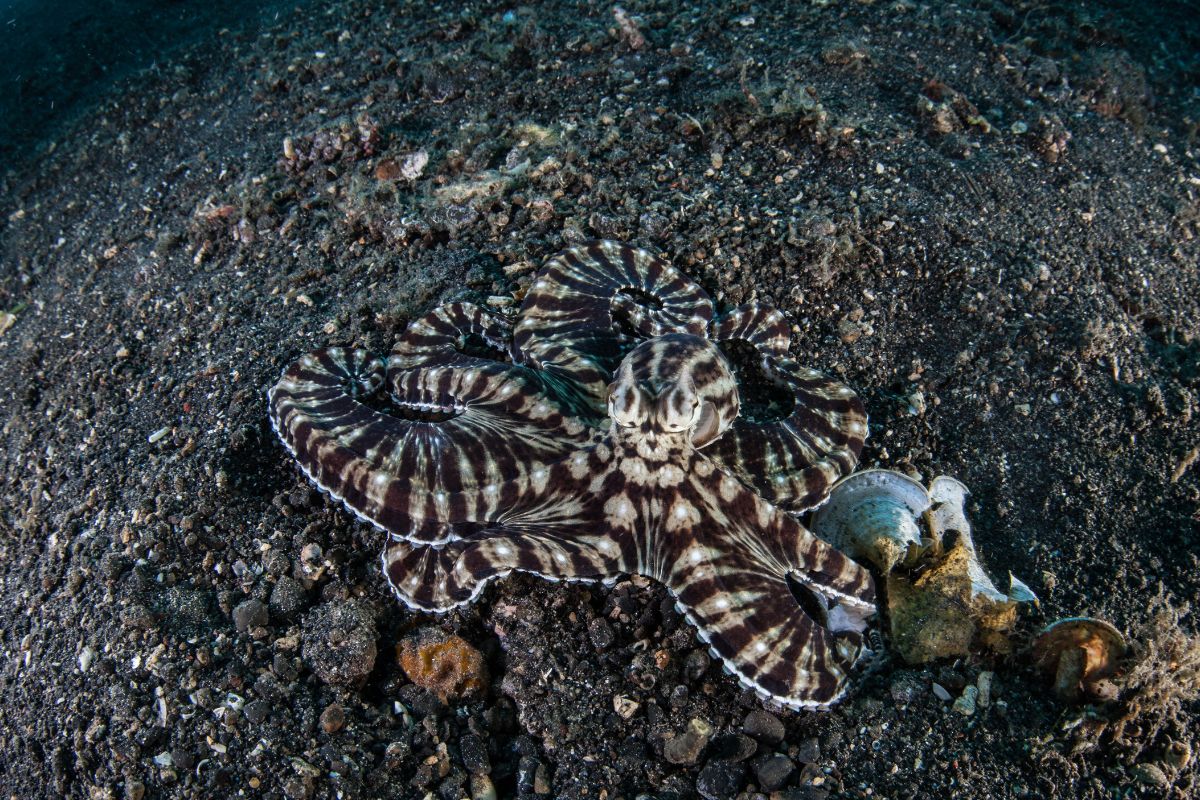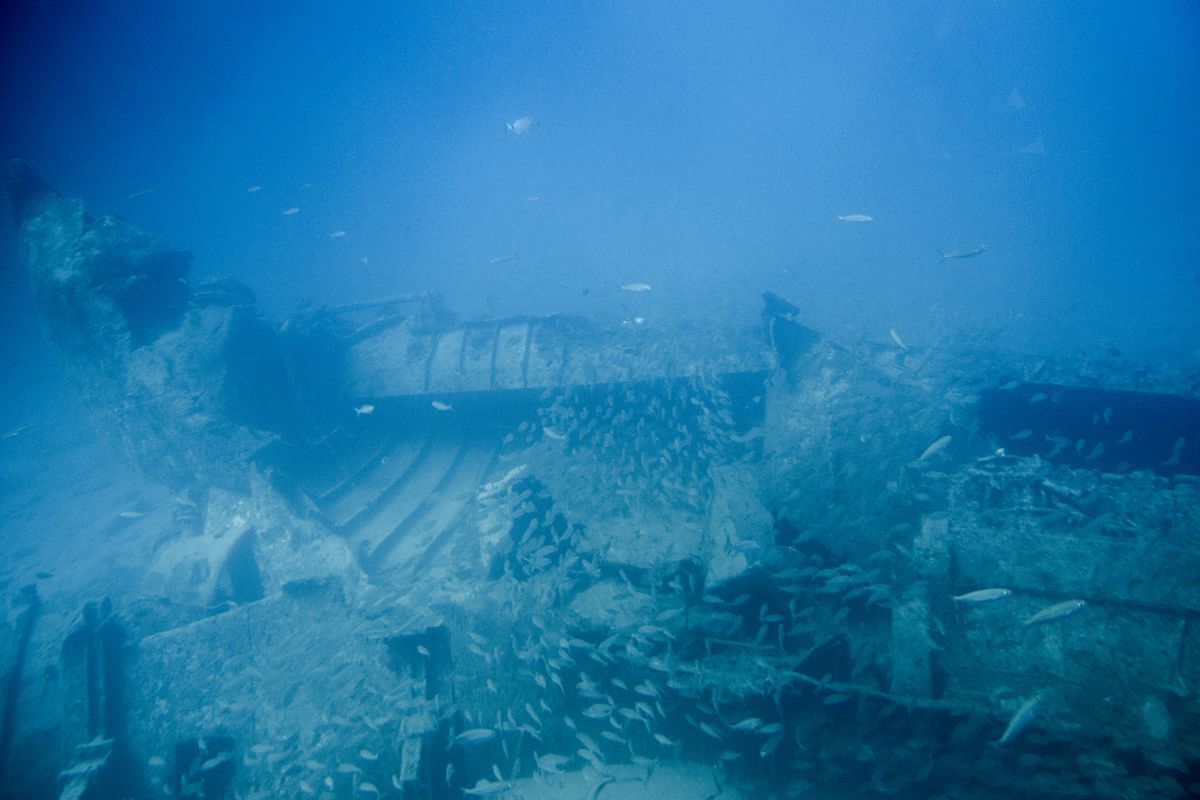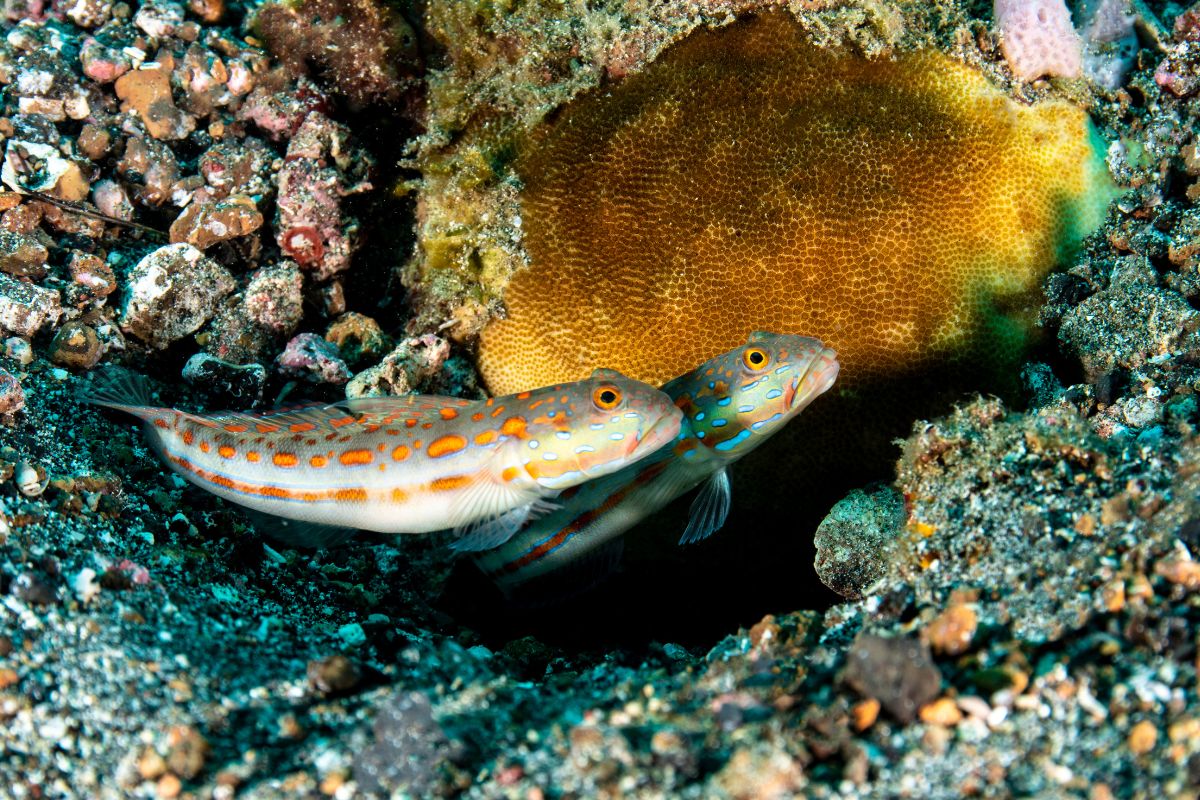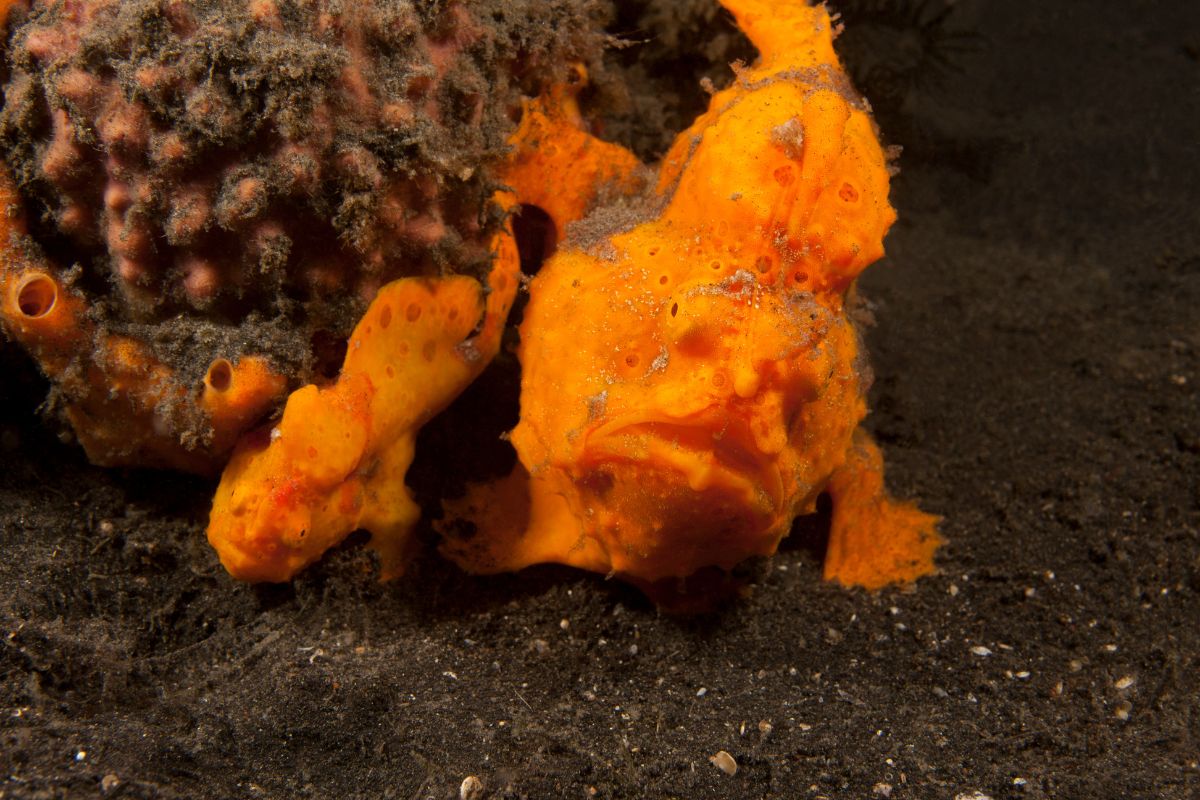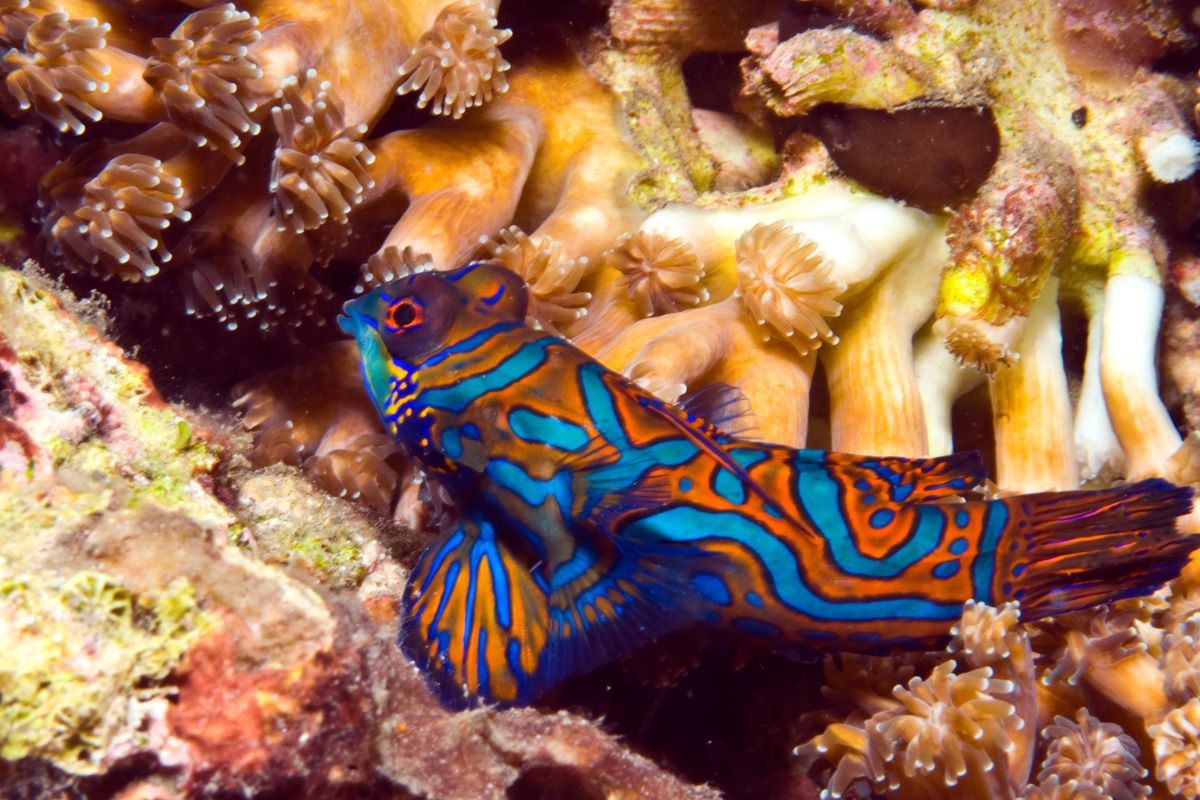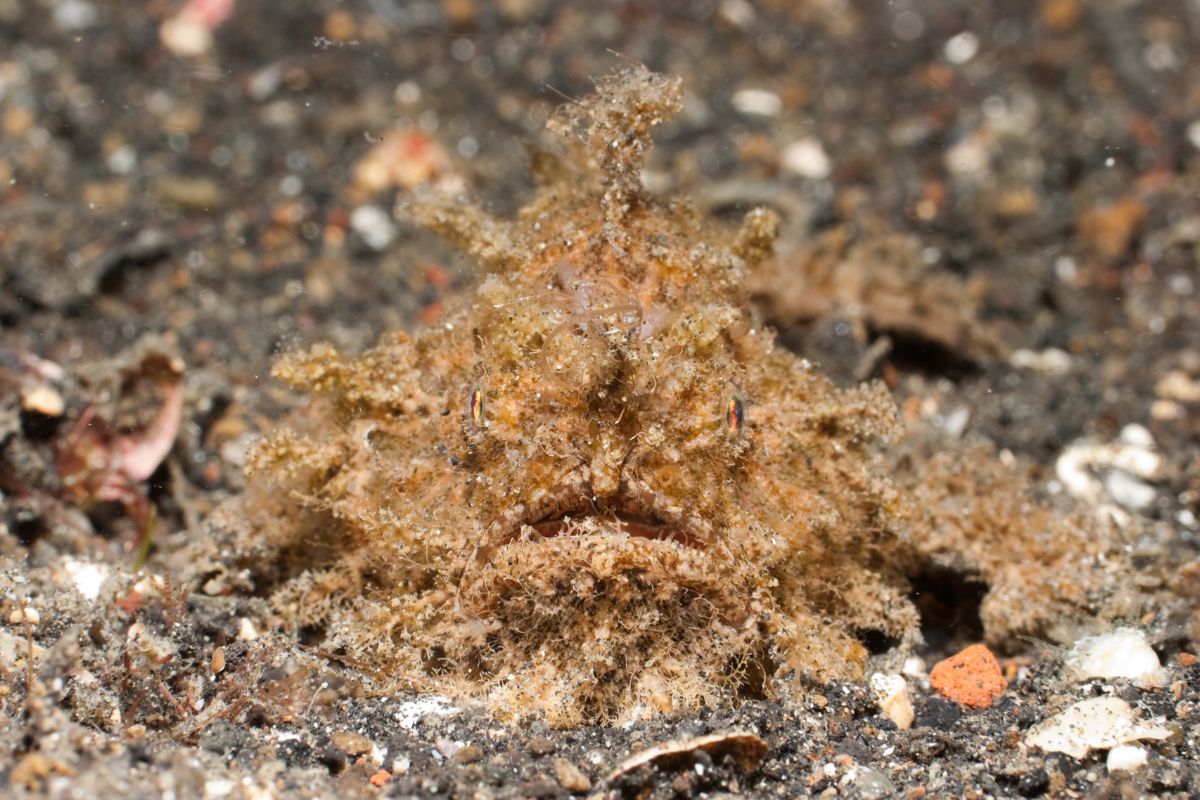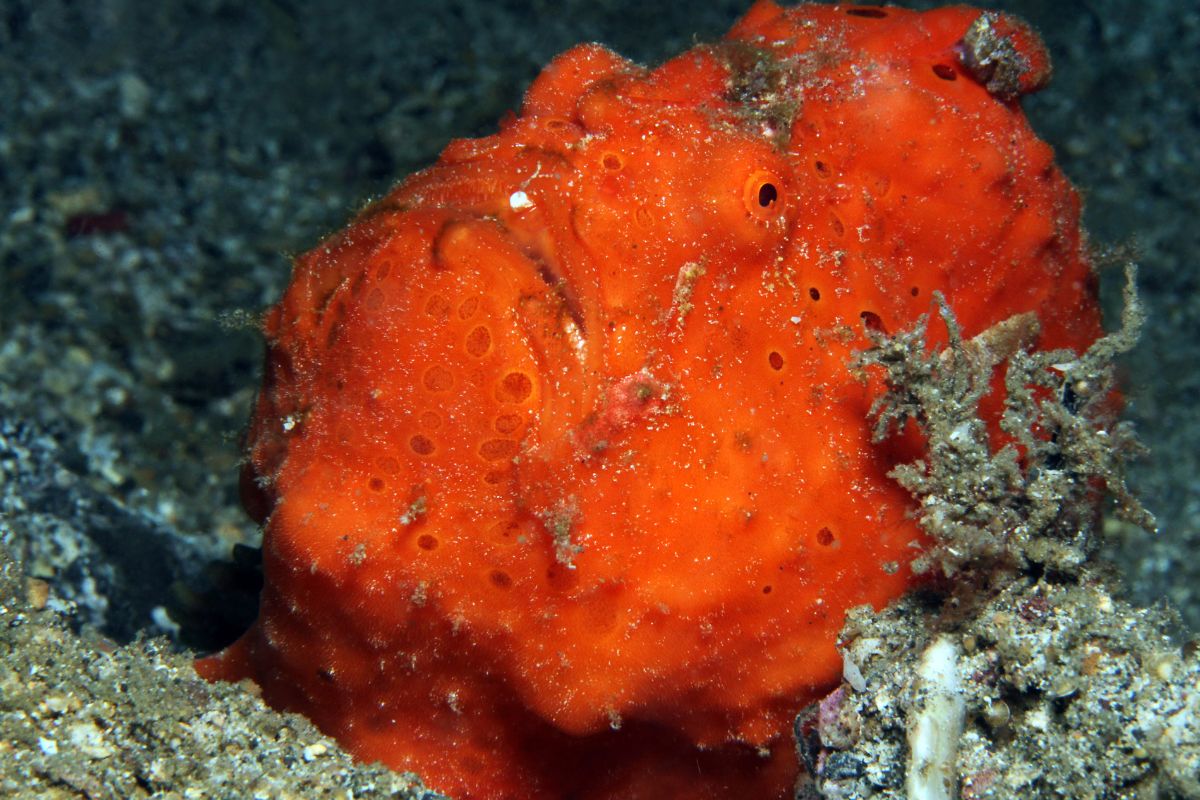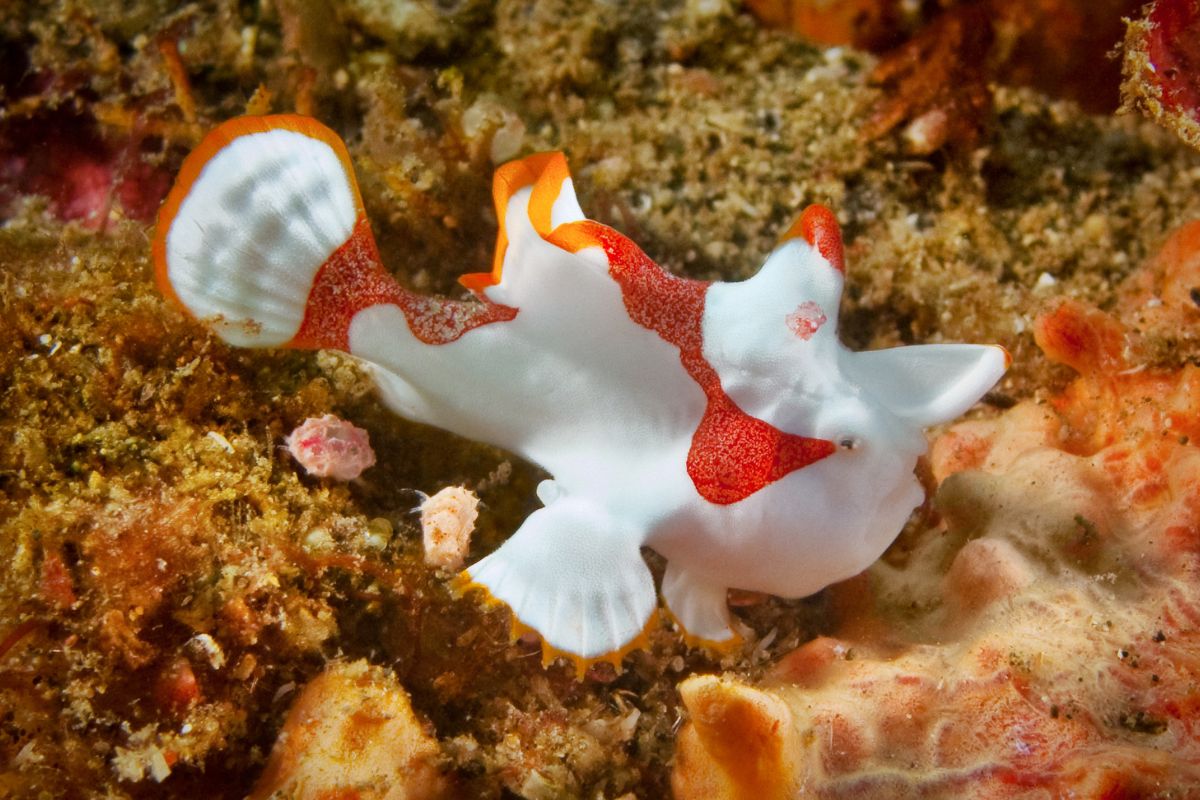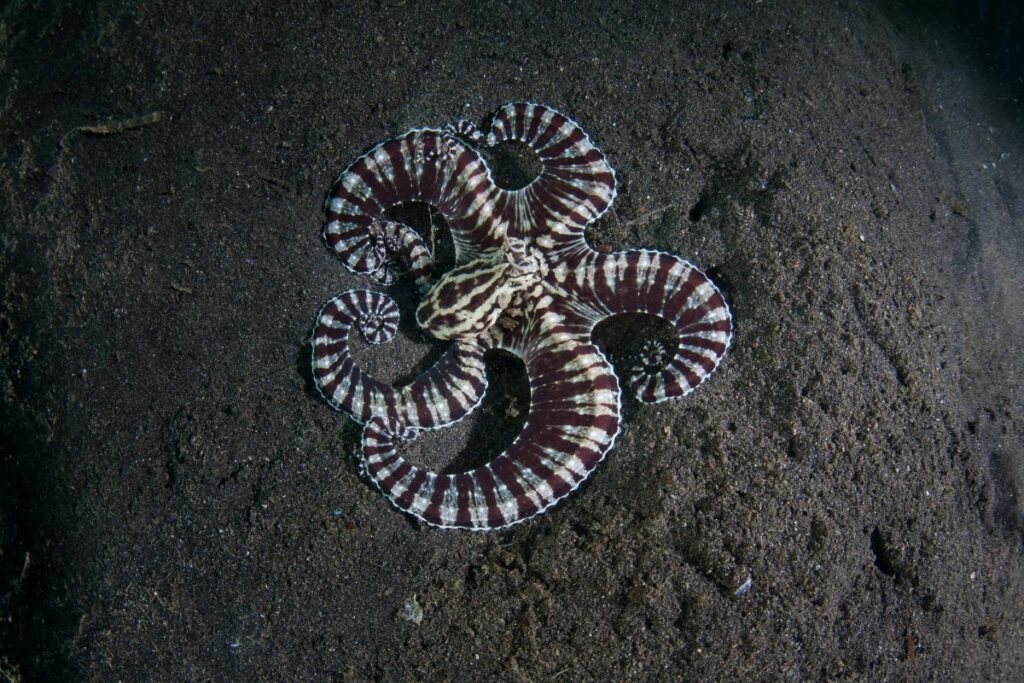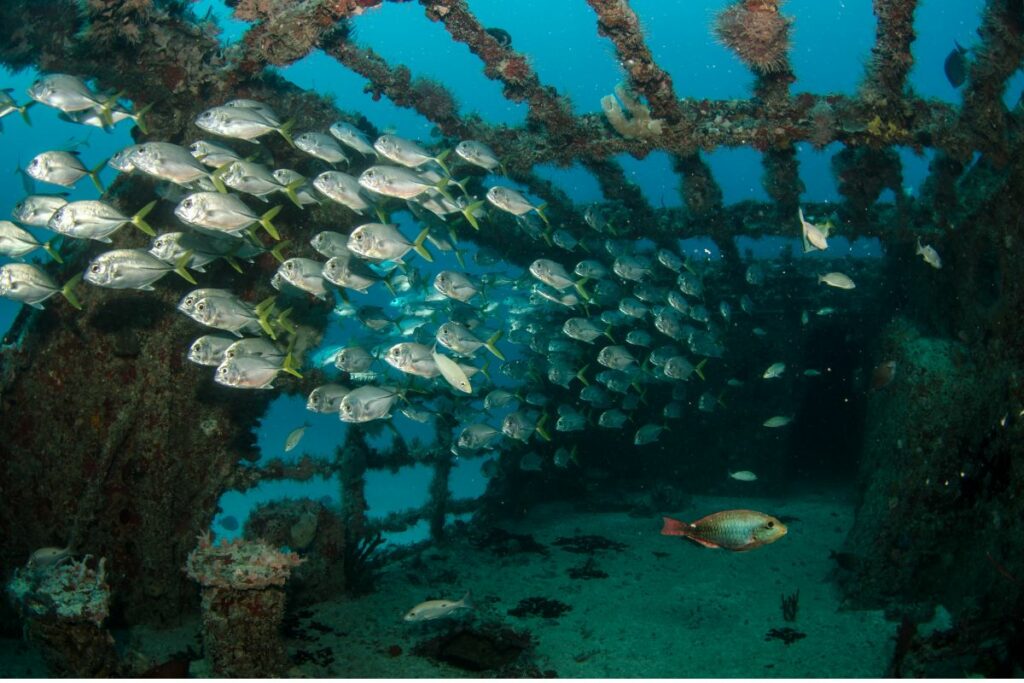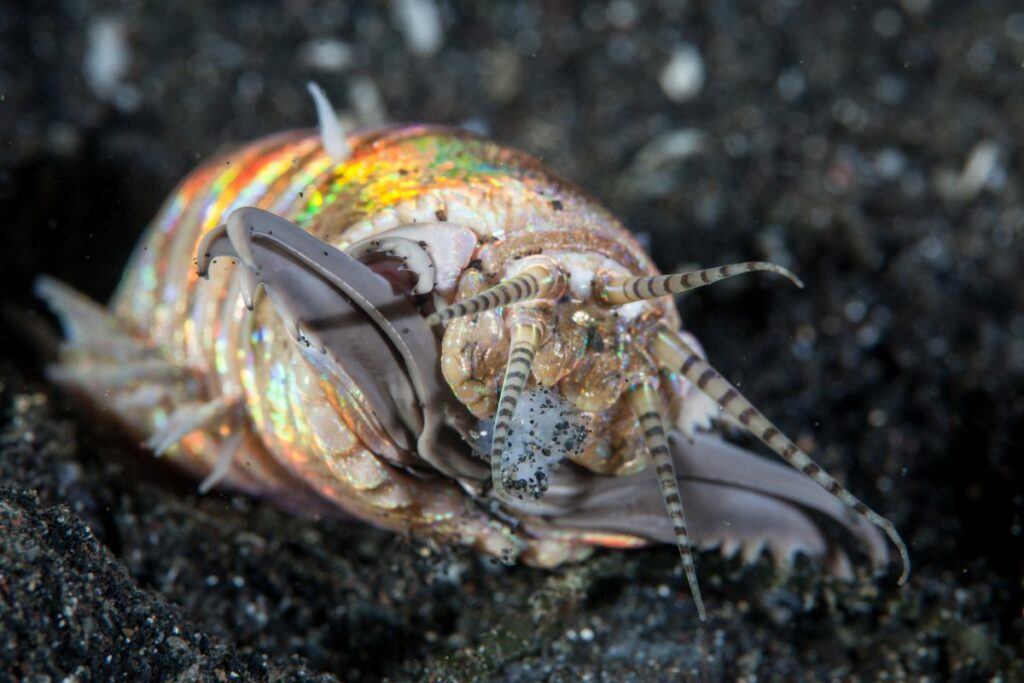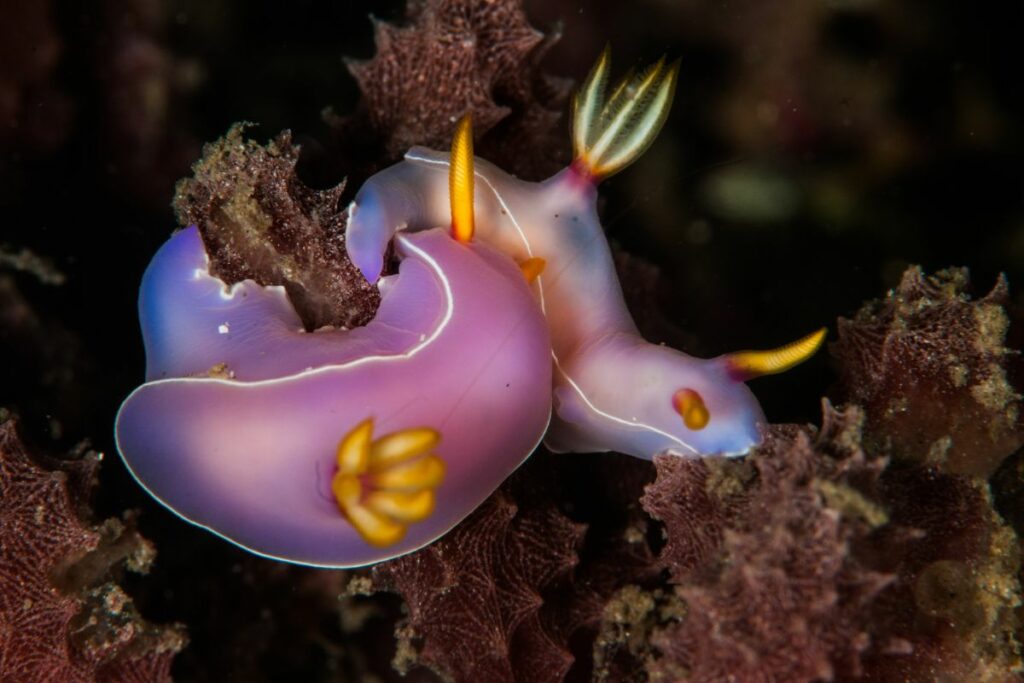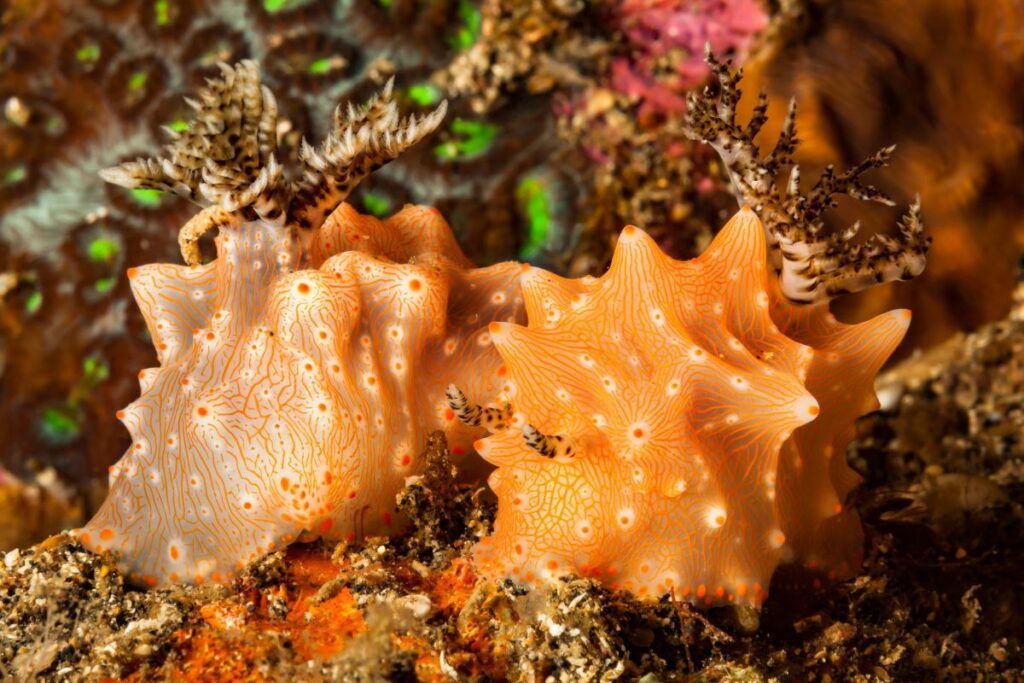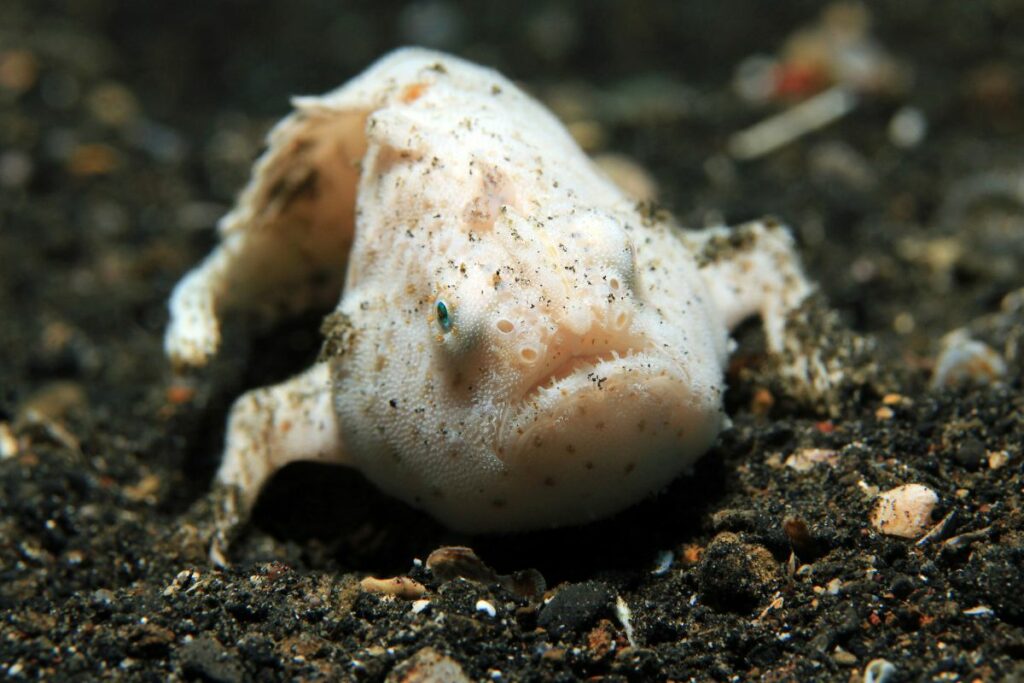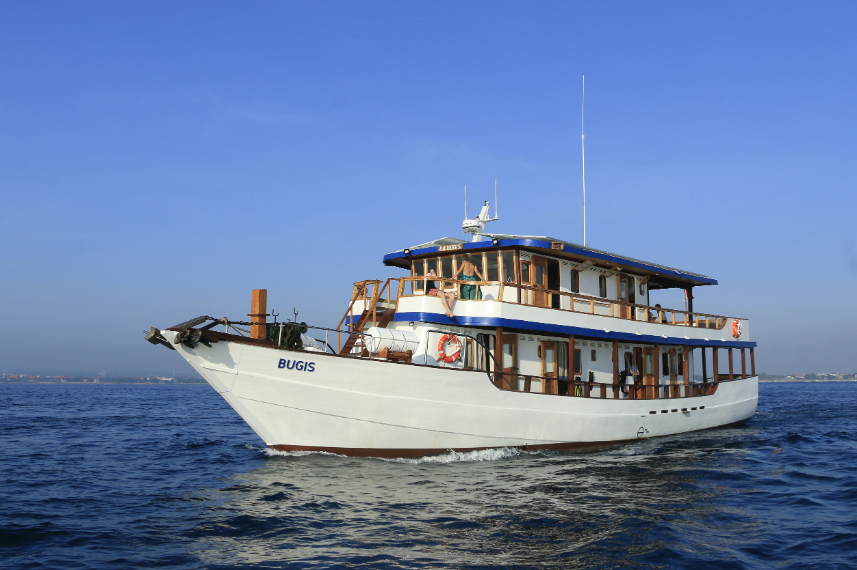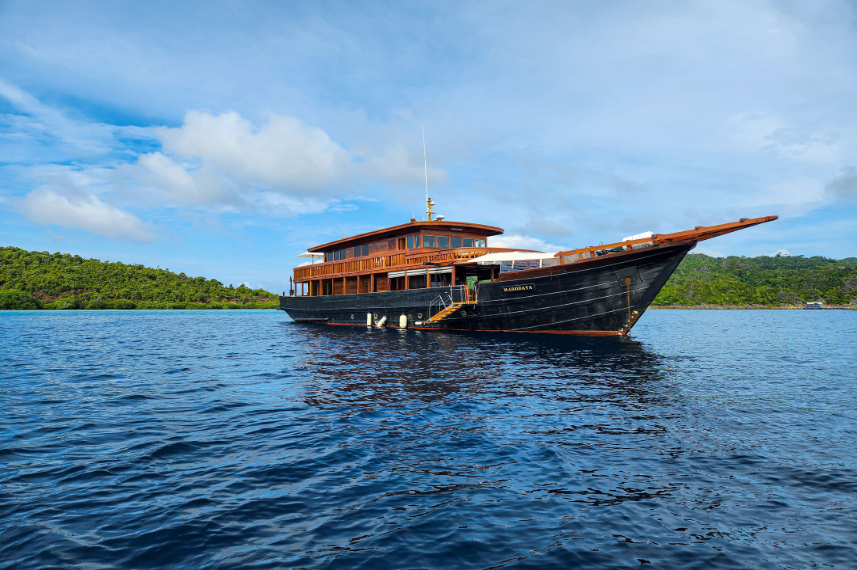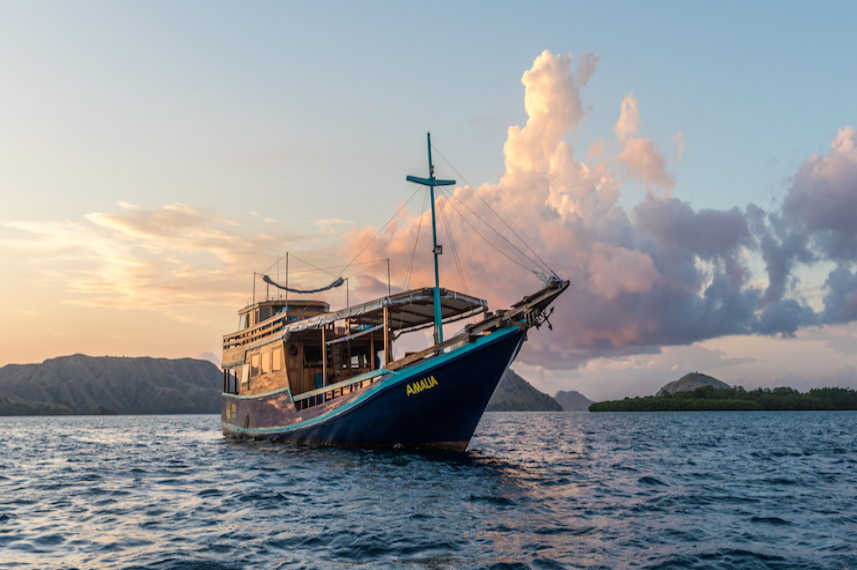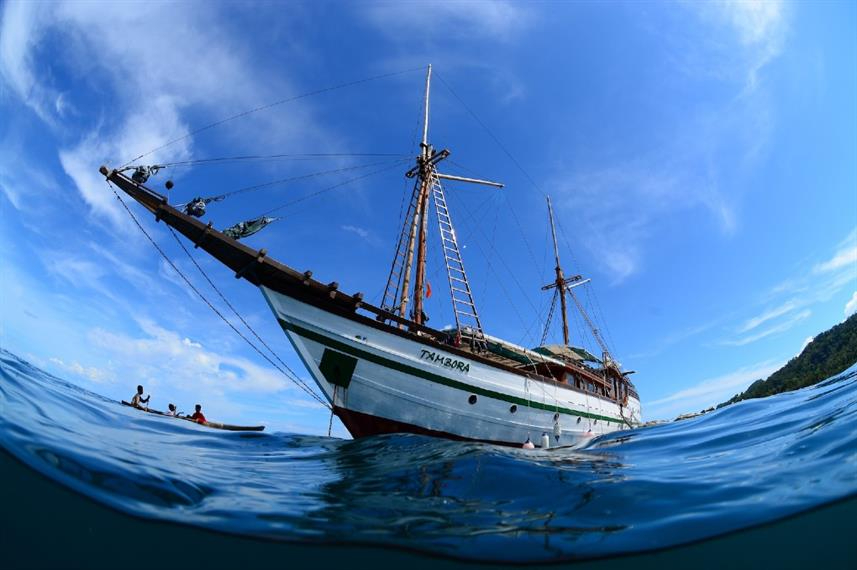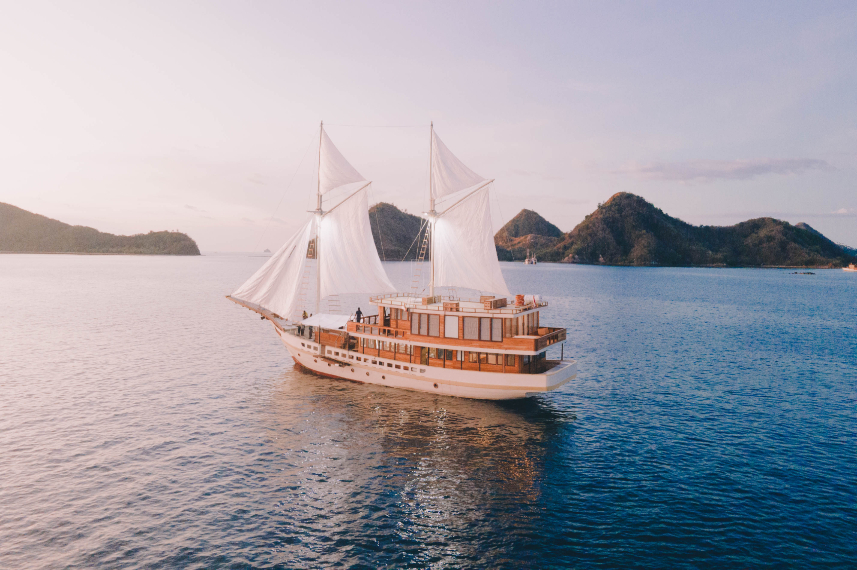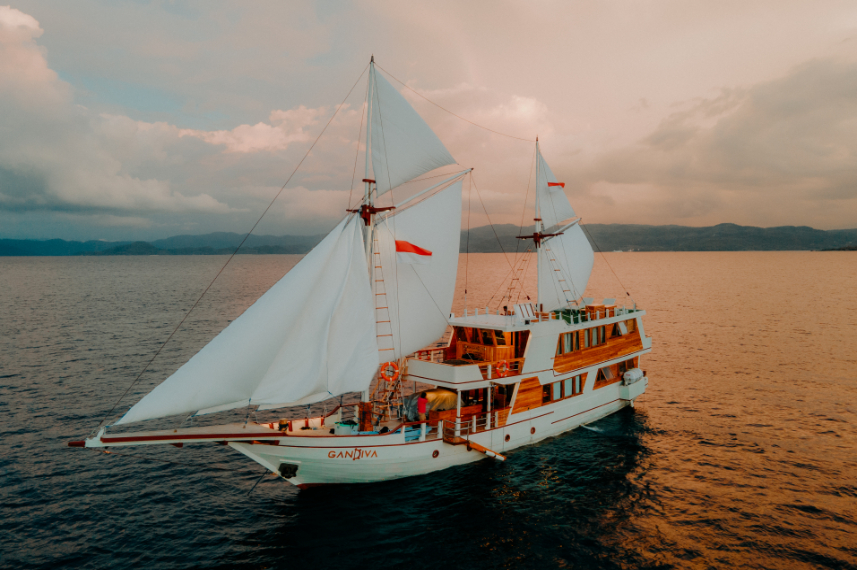Lembeh Strait
Lembeh Strait has been known as one of the best muck diving destinations in the world. Similar to Ambon, this dive site is even deemed “The Critter Capital of the World” and has been on the list of every muck enthusiast since the 1990s.
As one of the best macro and super-macro photography destinations in the world, prepare yourself for the dive full of surprising sightings of everything macro. With its dark volcanic sand as the background, diving in Lembeh Strait is undoubtedly one for the book.
Top highlights of Lembeh Strait
- Lembeh Strait is the Frogfish capital, with no less than nine species identified and spotted!
- The Japanese freighter wreck in Bimoli Wreck gives a nice break from all of the muck diving.
- Explore the nocturnal creatures during the night dives at Air Prang, Police Pier, and Nudi Retreat.
- Look for the mimic octopus in Teluk Kembahu, the spot where the species first observed.
About Lembeh Strait
Located in the northeast part of Sulawesi, Lembeh Strait is a narrow strait dividing Lembeh Island and the mainland of Sulawesi. With only 14 kilometers in length,
Lembeh Strait consists of rocky pinnacles, black volcanic slopes, rubble zones, and several shipwrecks, and this set the impeccable environment for macro creatures.
Another factor as to why Lembeh Strait is full of macro life is the geographic location. The strait lies right in the path of currents interconnecting the Indian and Pacific Oceans, bringing a steady food supply and creating the ideal conditions for diverse marine life.
Diving in Lembeh Strait
Lembeh Strait takes muck diving to the stratospheric level and has been for decades. The murky waters and the black volcanic sand are pivotal in providing the macro creatures the perfect environment to thrive and evolve.
Spotting the critters in Lembeh Strait takes patience and effort, as the low visibility and the ability of these macro creatures to camouflage have created the perfect combo. Different species of critters are abundant, from cuttlefish, octopus (includes blue-ringed, mimic, wunderpus, hairy, and coconut), scorpionfish, pygmy seahorses to nudibranch, scorpionfish, mandarin fish, cardinalfish, ribbon eels, Bobbit worms, and shrimp. The list is endless!
Frogfish appearance in Lembeh Strait is prominent. Different species, like the giant, the hispid, the sargassum, the painted, and the clown, can be found in many dive sites in Lembeh Strait. Look no further if seeing frogfish is high on your list.
The lack of seagrass does not equal the absence of seahorses and pipefish. Pygmy and spiny seahorses lead the pack, while species of pipefish like ghost, ringed, and banded pipefish are often found nearby.
The Banggai Cardinalfish can also be found in Lembeh Strait, one of the few places outside its native distribution in the Banggai Archipelago in Central Sulawesi. This small tropical fish is now considered endangered due to the collection for aquarium trade.
Another species that bears the name Lembeh is the Lembeh Seadragon (Kyonemichthys rumengani). This creature is a mixture of seahorses and pipefish but got its name because of their unique way of swimming and resembles the Australian seadragon. The Lembeh seadragon lives in pairs, and do not be surprised that in one area, sometimes they live up to ten pairs!
Discover your next adventure in
The Masters of Disguise of Lembeh Strait
Lembeh Strait is like no other muck diving destination in the world. The number of different critter species here is remarkable, to say the least. But one particular marine life takes the top spot when hunting for critters: frogfish. After all, this is one of the handful of places on earth with abundant frogfish in different species.
Frogfish has enchanted divers worldwide, and certainly not for its looks. The adrenaline rush mixed with expectations of seeing one is the reason that drives macro enthusiasts, primarily because their mastery in camouflaging makes it tricky to identify.
There are at least nine species of frogfish that have been discovered inhabiting the waters of Lembeh Strait.
One of those species is the hairy frogfish, which has numerous thin skin and long appendages that resemble hair. Then, there are painted frogfish in different colors, from orange to white, which is rarely seen. Giant frogfish are the largest species—making them easy to spot—and can grow up to 45 centimeters. Warty frogfish in Lembeh Strait has the common color variations of white and yellow, but they can also be in pink, red, and shades of brown and black. In reality, clown frogfish is a juvenile warty, but its appearance is quite distinct from the adult warty. Freckled frogfish/scarlet frogfish are often found hiding in reef crevices and favor shallow waters. Hispid frogfish are often mistaken for hairy frogfish, but the difference lies in the length of the appendages.
Some of the frogfish are rarely seen, even here in Lembeh Strait. Ocellated frogfish are identifiable by their bright orange color and prefer sand and rubble patches. Randall’s frogfish is another one that is difficult to spot because their color variations are limited to brown and black or yellow to red. Sargassum frogfish inhabits sargassum seaweed; hence, its name and sightings depend on the seaweed as it will float with it.
Diving Environments in Lembeh Strait
Muck diving is not famous for excellent visibility, and the one in Lembeh Strait is no exception. The visibility here ranges from 5 to 15 meters, with an average of 10 meters throughout the year.
Many of the dive sites in Lembeh Strait are catered to any level of diving experience, even though the current can be strong in some areas. The water temperature here averages 25 to 29 degrees Celsius, and during the cooler months of July and August, it can drop to 25 to 26 degrees Celsius. It is advisable to wear full-body wetsuits. Ideally, a 5mm suit is ideal when diving in the cold-water months.
The depth range of dive sites in Lembeh Strait is 5 to 30 meters, with most being sand, rock, muck, and rubble. Some areas have corals and walls, but divers visit Lembeh Strait primarily for muck diving.
Discover your next adventure in
How to get to Lembeh Strait
Getting to Bitung is relatively straightforward. Manado is the entry point, as Bitung, the closest city to Lembeh Strait and Lembeh Island, is only about an hour away by taking the highway.
A direct flight to Manado is available if you fly from Jakarta (Garuda, Batik Air, Citilink) or Singapore (when this article was written, only Scoot operated directly from Singapore to Manado). If you fly from Surabaya, only Lion Air offers non-stop flights to Manado, while Citilink, Batik Air, and Garuda have a stopover in Makassar.
From Bali, there is no direct flight to Manado. Most of the services have layovers in Surabaya or Makassar.
Diving Seasons & Weather in Lembeh Strait
The nature of Lembeh Strait, which is protected by mainland Sulawesi and Lembeh Island, means that diving here is accessible all year long.
The dry season runs from March to October, while the rainy season lasts from November to February. The rainfall in this area is not as heavy as in other parts of Indonesia, making it ideal to visit even during the wet season.
The best period is from July to November, with July and August being peak diving seasons. The visibility in August is not the best, but this makes up for the ideal condition for critters hunting, while October to December is considered the clearest period for visibility.



